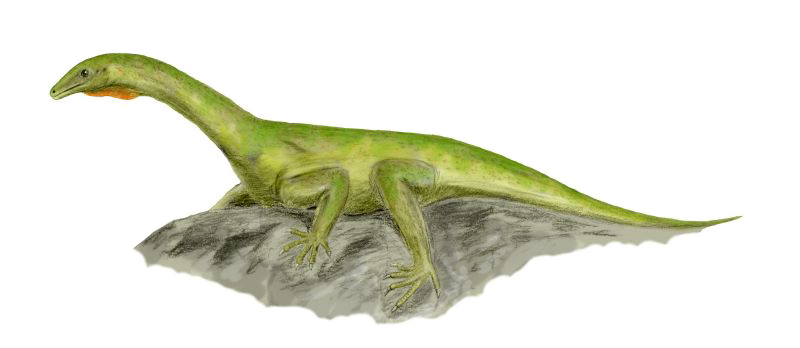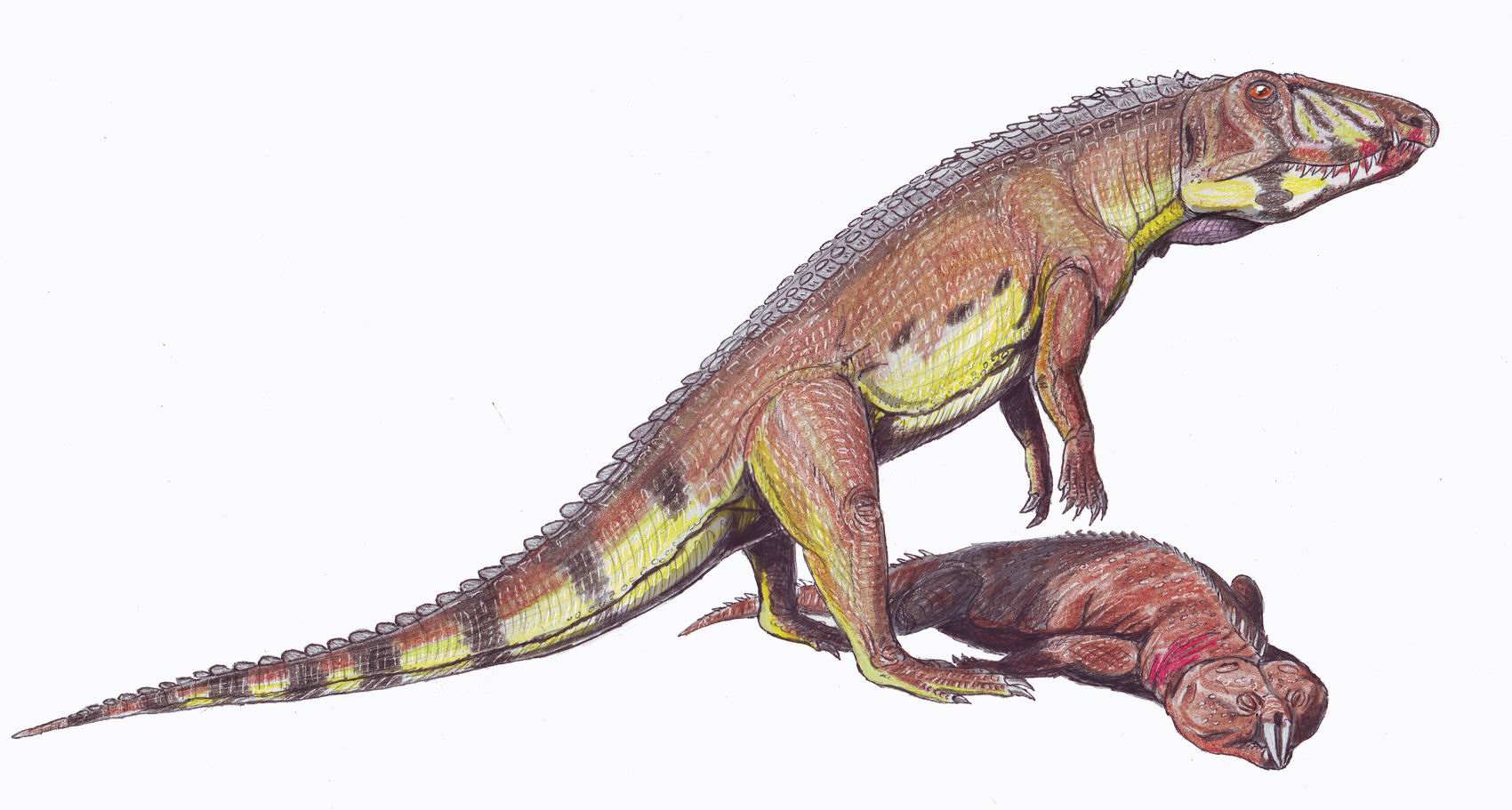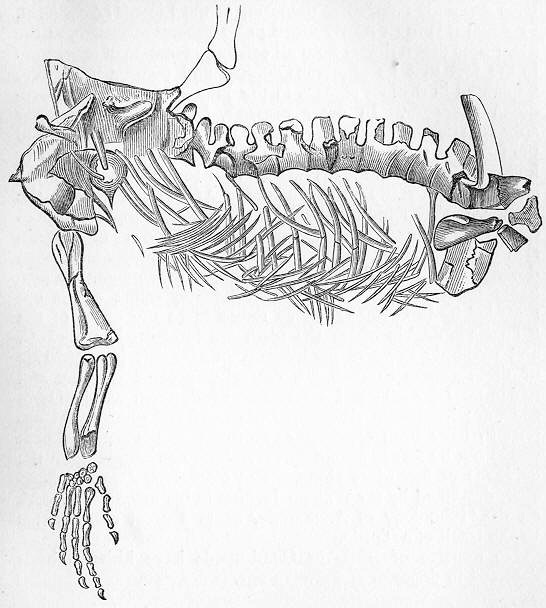|
Prolacertid
Prolacertidae is an extinct family of archosauromorph reptiles that lived during the Early Triassic epoch. It was named in 1935 by the British palaeontologist Francis Rex Parrington to include the species ''Prolacerta broomi'' of South Africa and Antarctica. In 1979 a second species, ''Kadimakara australiensis'', was described from Australia. Several other genera, such as ''Macrocnemus'', ''Pamelaria'' and ''Prolacertoides'', have also been assigned to this family in the past, but these have been placed elsewhere by later studies, leaving ''Prolacerta'' and ''Kadimakara'' as the only well-supported members. The prolacertids were historically placed within the paraphyletic group Prolacertiformes along with other basal, long-necked archosauriforms like '' Protorosaurus'' and the tanystropheid Tanystropheidae is an extinct family of mostly marine archosauromorph reptiles that lived throughout the Triassic Period. They are characterized by their long, stiff necks formed from e ... [...More Info...] [...Related Items...] OR: [Wikipedia] [Google] [Baidu] |
Prolacertiformes
Protorosauria is an extinct polyphyletic group of archosauromorph reptiles from the latest Middle Permian (Capitanian stage) to the end of the Late Triassic (Rhaetian stage) of Asia, Europe and North America. It was named by the English anatomist and paleontologist Thomas Henry Huxley in 1871 as an order, originally to solely contain ''Protorosaurus''. Other names which were once considered equivalent to Protorosauria include Prolacertiformes and Prolacertilia. Protorosaurs are distinguished by their long necks formed by elongated cervical vertebrae, which have ribs that extend backward to the vertebrae behind them. Protorosaurs also have a gap between the quadrate bones and the jugal bones in the back of the skull near the jaw joint, making their skulls resemble those of lizards. While previously thought to be monophyletic, the group is now though to consist of various groups of basal archosauromorph reptiles that lie outside Crocopoda. Classification Protorosauria was consi ... [...More Info...] [...Related Items...] OR: [Wikipedia] [Google] [Baidu] |
Pamelaria
''Pamelaria'' is an extinct genus of allokotosaurian archosauromorph reptile known from a single species, ''Pamelaria dolichotrachela'', from the Middle Triassic of India. ''Pamelaria'' has sprawling legs, a long neck, and a pointed skull with nostrils positioned at the very tip of the snout. Among early archosauromorphs, ''Pamelaria'' is most similar to ''Prolacerta'' from the Early Triassic of South Africa and Antarctica. Both have been placed in the family Prolacertidae. ''Pamelaria'', ''Prolacerta'', and various other Permo-Triassic reptiles such as ''Protorosaurus'' and ''Tanystropheus'' have often been placed in a group of archosauromorphs called Protorosauria (alternatively called Prolacertiformes), which was regarded as one of the most basal group of archosauromorphs. However, more recent phylogenetic analyses indicate that ''Pamelaria'' and ''Prolacerta'' are more closely related to Archosauriformes than are ''Protorosaurus'', ''Tanystropheus'', and other protorosaurs, ... [...More Info...] [...Related Items...] OR: [Wikipedia] [Google] [Baidu] |
Prolacertoides
''Prolacertoides'' is an extinct genus of archosauromorph reptile from the Early Triassic of China, the type species being ''Prolacertoides jimusarensis''. ''Prolacertoides'' means 'like ''Prolacerta''', in reference to ''Prolacerta'', another genus of archosauromorph which ''Prolacertoides'' was once believed to have been closely related to. ''Prolacertoides'' is known from a single partial skull, IVPP V3233, which was discovered in Xinjiang in northwestern China. The locality of its discovery belongs to the Cangfanggou Group of the Jiucaiyuan Formation, which is dated to the Induan age of the very early Triassic. Description IVPP V3233 is a partially flattened and incomplete skull, with some bones being well preserved and others being badly damaged. The snout is tapering and lacks antorbital fenestrae. The anterodorsal edge of each maxilla is convex, in contrast to the concave edge of other basal archosauromorphs. The ascending process of each maxilla is tall and anteropos ... [...More Info...] [...Related Items...] OR: [Wikipedia] [Google] [Baidu] |
Tanystropheid
Tanystropheidae is an extinct family of mostly marine archosauromorph reptiles that lived throughout the Triassic Period. They are characterized by their long, stiff necks formed from elongated cervical vertebrae with very long cervical ribs. Some tanystropheids such as ''Tanystropheus'' had necks that were several meters long, longer than the rest of their bodies. Tanystropheids are known from Europe, Asia (Russia, China, and Saudi Arabia), North America and probably South America (Brazil). The presence of tanystropheids in Europe and China indicate that they lived along much of the coastline of the Tethys Ocean. However, species in western North America are found in terrestrial deposits, suggesting that as a group, tanystropheids were ecologically diverse. Relationships among tanystropheid species have been difficult to resolve because most specimens were flattened during fossilization and are preserved two-dimensionally. Three-dimensional fossils are known from Europe and Nort ... [...More Info...] [...Related Items...] OR: [Wikipedia] [Google] [Baidu] |
Rhynchosaur
Rhynchosaurs are a group of extinct herbivorous Triassic archosauromorph reptiles, belonging to the order Rhynchosauria. Members of the group are distinguished by their triangular skulls and elongated, beak like premaxillary bones. Rhynchosaurs first appeared in the Middle Triassic or possibly the Early Triassic, before becoming abundant and globally distributed during the Carnian stage of the Late Triassic. Description Rhynchosaurs were herbivores, and at times abundant (in some fossil localities accounting for 40 to 60% of specimens found), with stocky bodies and a powerful beak. Early primitive forms, like ''Mesosuchus'' and '' Howesia'', were generally small and more typically lizard-like in build, and had skulls rather similar to the early diapsid ''Youngina'', except for the beak and a few other features. Later and more advanced genera grew to medium to medium large size, up to two meters in length. The skull in these forms were short, broad, and triangular, becoming muc ... [...More Info...] [...Related Items...] OR: [Wikipedia] [Google] [Baidu] |
Trilophosaurus Buettneri (flipped)
''Trilophosaurus'' ( Greek for "lizard with three ridges") is a lizard-like trilophosaurid allokotosaur known from the Late Triassic of North America. It was a herbivore up to 2.5 m long. It had a short, unusually heavily built skull, equipped with massive, broad flattened cheek teeth with sharp shearing surfaces for cutting up tough plant material. Teeth are absent from the premaxilla and front of the lower jaw, which in life were probably equipped with a horny beak. The skull is also unusual in that the lower temporal opening is missing, giving the appearance of a euryapsid skull. Because of this, the trilophosaurs were once classified with placodonts within Sauropterygia. Carroll (1988) suggested that the lower opening may have been lost to strengthen the skull. ''Trilophosaurus'' is traditionally thought to include two valid species: the typical ''T. buettneri'' and the more robust ''T. jacobsi''. In 1993, paleontologists Hans-Dieter Sues and Paul E. Olsen reassig ... [...More Info...] [...Related Items...] OR: [Wikipedia] [Google] [Baidu] |
Allokotosauria
Allokotosauria is a clade of early archosauromorph reptiles from the Middle to Late Triassic known from Asia, Africa, North America and Europe. Allokotosauria was first described and named when a new monophyletic grouping of specialized herbivorous archosauromorphs was recovered by Sterling J. Nesbitt, John J. Flynn, Adam C. Pritchard, J. Michael Parrish, Lovasoa Ranivoharimanana and André R. Wyss in 2015. The name Allokotosauria is derived from Greek meaning "strange reptiles" in reference to unexpected grouping of early archosauromorph with a high disparity of features typically associated with herbivory. History Nesbitt ''et al.'' (2015) defined the group as a stem-based taxon containing ''Azendohsaurus madagaskarensis'' and '' Trilophosaurus buettneri'' and all taxa more closely related to them than to ''Tanystropheus longobardicus'', ''Proterosuchus fergusi'', ''Protorosaurus speneri'' or ''Rhynchosaurus articeps''. Therefore, Allokotosauria includes the families Azendoh ... [...More Info...] [...Related Items...] OR: [Wikipedia] [Google] [Baidu] |
Crocopoda
Archosauromorpha (Greek for "ruling lizard forms") is a clade of diapsid reptiles containing all reptiles more closely related to archosaurs (such as crocodilians and dinosaurs, including birds) rather than lepidosaurs (such as tuataras, lizards, and snakes). Archosauromorphs first appeared during the late Middle Permian or Late Permian, though they became much more common and diverse during the Triassic period. Although Archosauromorpha was first named in 1946, its membership did not become well-established until the 1980s. Currently Archosauromorpha encompasses four main groups of reptiles: the stocky, herbivorous allokotosaurs and rhynchosaurs, the hugely diverse Archosauriformes, and a polyphyletic grouping of various long-necked reptiles including ''Protorosaurus'', tanystropheids, and ''Prolacerta''. Other groups including pantestudines (turtles and their extinct relatives) and the semiaquatic choristoderes have also been placed in Archosauromorpha by some authors. Archos ... [...More Info...] [...Related Items...] OR: [Wikipedia] [Google] [Baidu] |
Macrocnemus BW
''Macrocnemus'' is an extinct genus of archosauromorph reptile known from the Middle Triassic (Late Anisian to Ladinian) of Europe and China. ''Macrocnemus'' is a member of the Tanystropheidae family and includes three species''. Macrocnemus bassanii'', the first species to be named and described, is known from the Besano Formation and adjacent paleontological sites in the Italian and Swiss Alps. ''Macrocnemus fuyuanensis,'' on the other hand, is known from the Falang Formation in southern China. A third species, ''Macrocnemus obristi,'' is known from the Prosanto Formation of Switzerland and is characterized by gracile limbs. The name ''Macrocnemus'' is Greek for "long tibia". Description ''Macrocnemus'' is known from multiple specimens, most belonging to ''M. bassanii''. ''Macrocnemus'' possessed at least 52 or 53 caudal vertebrae. Like many other early archosauromorphs, ''Macrocnemus'' had a small and low head on the end of a thin neck containing vertebrae with low neural sp ... [...More Info...] [...Related Items...] OR: [Wikipedia] [Google] [Baidu] |
Tanystropheidae
Tanystropheidae is an extinct family of mostly marine archosauromorph reptiles that lived throughout the Triassic Period. They are characterized by their long, stiff necks formed from elongated cervical vertebrae with very long cervical ribs. Some tanystropheids such as ''Tanystropheus'' had necks that were several meters long, longer than the rest of their bodies. Tanystropheids are known from Europe, Asia (Russia, China, and Saudi Arabia), North America and probably South America (Brazil). The presence of tanystropheids in Europe and China indicate that they lived along much of the coastline of the Tethys Ocean. However, species in western North America are found in terrestrial deposits, suggesting that as a group, tanystropheids were ecologically diverse. Relationships among tanystropheid species have been difficult to resolve because most specimens were flattened during fossilization and are preserved two-dimensionally. Three-dimensional fossils are known from Europe and N ... [...More Info...] [...Related Items...] OR: [Wikipedia] [Google] [Baidu] |
Jesairosaurus
''Jesairosaurus'' is an extinct genus of early archosauromorph reptile known from the Illizi Province of Algeria. It is known from a single species, ''Jesairosaurus lehmani''. Although a potential relative of the long-necked tanystropheids, this lightly-built reptile could instead be characterized by its relatively short neck as well as various skull features. Etymology and discovery Zarzaïtine fossil material has been known since 1957. Much of the material has been recovered by French expeditions in the late 1950s and 1960s, and deposited at the Laboratoire de Paleontologie (Paleontology department) at the Museum national d'Histoire naturalle in Paris. Algerian fossils were prepared at this institution over subsequent years. Several putative procolophonid skeletons reported in 1971 were later determined to belong to " prolacertiforms" in 1990. The term "prolacertiform" is now considered to refer to an unnatural polyphyletic grouping of early archosauromorphs, distant relatives ... [...More Info...] [...Related Items...] OR: [Wikipedia] [Google] [Baidu] |
Protorosaurus BW
''Protorosaurus'' ("first lizard") is a genus of lizard-like early reptiles. Members of the genus lived during the late Permian period in what is now Germany and Great Britain. Once believed to have been an ancestor to lizards, ''Protorosaurus'' is now known to be one of the oldest and most primitive members of Archosauromorpha, the group that would eventually lead to archosaurs such as crocodilians and dinosaurs. Description ''Protorosaurus'' grew up to in length, and was a slender, lizard-like animal, vaguely resembling a monitor lizard, with long legs and a long neck. Discovery ''Protorosaurus'' was one of the first fossil reptiles to be described, being initially described in Latin in 1710 by from a specimen found in Thuringia in Germany, who considered the animal to be a crocodile, and most similar to the Nile crocodile (''C. niloticus''). Over a century later, in publications in 1830 and 1832 Hermann von Meyer recognised ''Protorosaurus'' as distinct extinct reptile ... [...More Info...] [...Related Items...] OR: [Wikipedia] [Google] [Baidu] |






